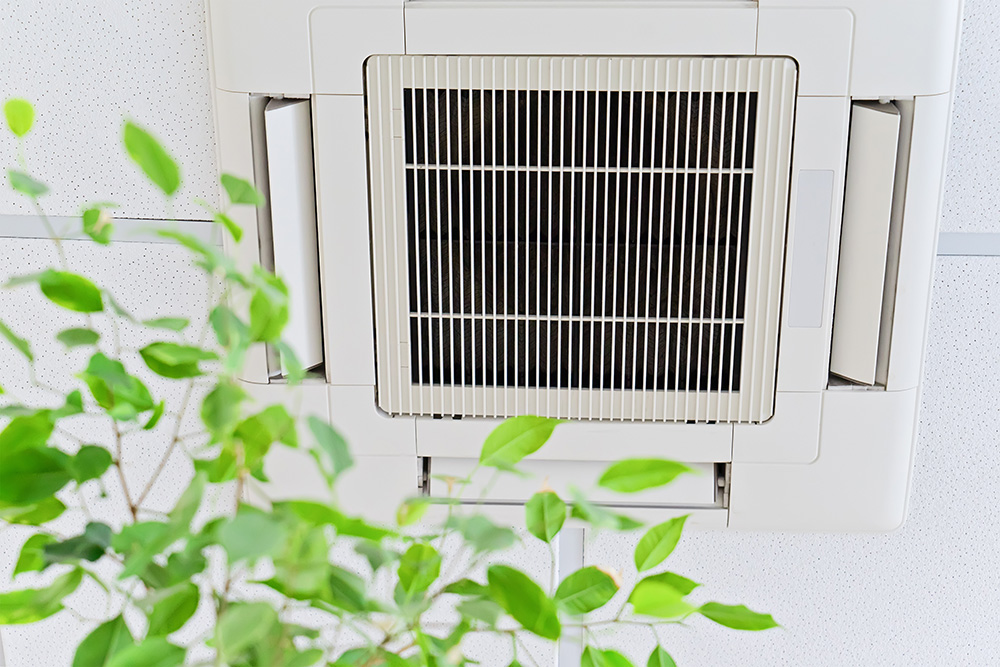The pandemic led to thousands of school closures across the nation, disrupting educational outcomes, physical and mental health, and the lives of millions of American families. Studies have shown that had indoor air been cleaner and safer, school closures might have been avoided. Poor indoor air quality is now a national concern, but the question remains: what is the best way to solve it? A recent NY Times article (“Why Haven’t We Made It Safer to Breathe in Classrooms“) explores the current state of IAQ mitigation, specifically government funding to schools and the variety of air purification solutions on the market.
The article warns against expensive and/or ineffective air cleaning technologies, arguing schools should instead focus on two things: 1) improving ventilation strategies, and 2) using filtration to trap pathogens. While important and valuable, these general strategies alone cannot prove the air in classrooms is safe—for that, you need measurement. Here’s the good news: effective IAQ monitoring actually improves those strategies while providing an assortment of other benefits at the same time.
The importance of IAQ measurement
Schools experienced immense disruption during the pandemic, with obvious health, educational, and social consequences. No one is eager to deal with future epidemics, wildfire smoke, and other airborne threats—so much so that $122 billion in government funding was allocated for schools to help solve the problem.
The bottom line is clean air in classrooms, so how does IAQ monitoring work to achieve it? IAQ monitoring systems don’t just tell you the air quality, they also let you know:
What is the extent of the problem?
Without IAQ monitoring, schools are left guessing how their indoor air compares to the latest standards. Furthermore, schools who have already purchased new mitigation solutions have no idea if they are working or not. By measuring things like CO2, humidity, and PMs, schools get a better idea about the number of pathogens in their indoor air, empowering them to select a suitable solution for their situation and budget.
Where does it need solving?
IAQ sensors help identify where the issues are. Why buy devices for every room when only 10% of the spaces have an air quality issue? Strategic placement of sensors can increase efficiency while also supplying other location-based measurements, such as occupancy or vape detection.
How to improve your solution
There are many ways to achieve clean air, from enormous HVAC upgrades all the way down to small DIY filter boxes. Truly effective IAQ monitoring systems (such as INVZBL’s Envelo) play nice with any solution. Integrations with HVAC and Building Management Systems automatically optimize ventilation (and energy usage, which we will cover later), while the system provides alerts to Facilities when manual action is necessary.
The NY Times article above warns against ozone generating IAQ solutions, but even schools who have bought devices using ozone can receive alerts to turn devices off if levels are too high.
No matter how schools decide to filter or purify air in classrooms, IAQ monitoring improves and optimizes the process. Envelo, for example, helps supply clean air in a cost-efficient, energy-efficient way that, crucially, offers immediate feedback.
How your strategy is justified
IAQ monitoring provides feedback in the form of data. Schools may spend money on cleaning the air, but is it working? Can the school show people the air is healthy? IAQ monitoring supplies the data to prove it. The Envelo system uses this data to generate an “Envelo Rating,” a simple to read and current measurement of the health of an indoor space. This rating can be displayed on-location to students, staff, and visitors, or even on the school website to offer peace of mind.

IAQ Monitoring and Healthy Buildings
Monitoring indoor air quality is not essential to keeping clean indoor air. But it is essential if you want to do so in a cost-efficient, energy-efficient, sustainable way. Most of the time, fresh outdoor air is either too hot or too cold for indoors, so it takes energy to increase ventilation and keep a building comfortable. It is easy to just bring in more fresh air by opening windows or maximizing fresh air through your HVAC – but at what cost to achieve the right temperature/comfort level?
Joseph G. Allen, Director of the Harvard Healthy Buildings Program, and CEO/Founder of 9 Foundations has been advocating for both healthier and greener buildings. He contends that the two ideas are not mutually exclusive, and that “[indoor air quality monitoring] is key, because it is the path to understanding how to optimize both health and energy in a building.”
This is precisely what effective IAQ monitoring, like Envelo, is designed to do: manage both IAQ and energy efficiency together. You must look at both. And Envelo does: recent case studies have shown dramatic energy savings in excess of 40%, with the service paying for itself with energy-savings alone, all while maintaining healthy indoor air.
The future of indoor air quality
So, what is the best way to solve poor indoor air quality? There are many cleaning and purification solutions, but one thing is clear: IAQ monitoring is step one. IAQ monitoring helps determine what solution to choose, where to use it, how to improve and optimize it, when energy costs can be saved, and finally, if your indoor air is actually safe.
It’s telling that Joseph Allen recognizes IAQ monitoring as a key aspect of healthier buildings. His organization 9 Foundations recently equipped Amazon’s entire global corporate portfolio with IAQ monitoring. The rest of corporate America is coming around too—from the NY Times: “…big corporations know the importance of healthy indoor air. JPMorgan Chase designed its Midtown Manhattan headquarters with MERV-13 filters, real-time air quality monitors and a high rate of bringing in outside air.
Why should our children have any less?”
—-
Click to learn more about managing and monitoring your IAQ with Envelo.


